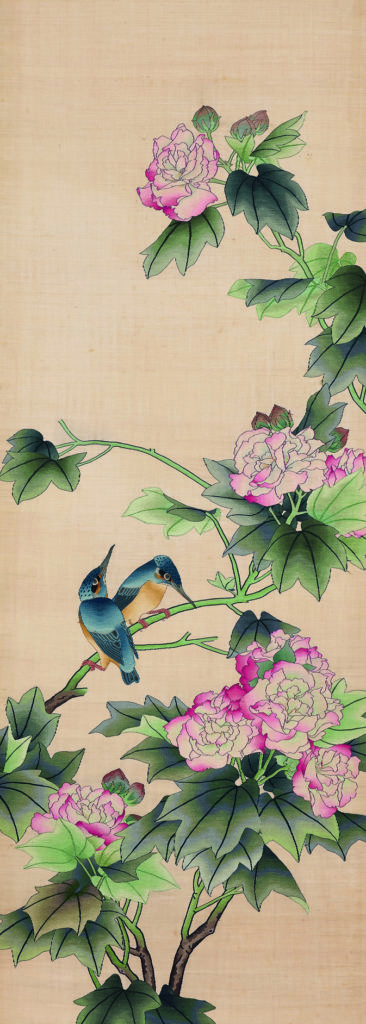Guided Viewings: 'Pictorial Silks: Chinese Textiles from the UMAG Collection' with Ms. Lee Meiyin (Members only event)
**Please note that only Fung Ping Shan Building entry is opened for visitors. Visitors are required by the UMAG to wear a mask, to use the “LeaveHomeSafe” mobile app or provide their personal contact details onsite.
For more precautionary measures please click:
https://www.umag.hku.hk/en/visit_us.php?id=121399
The HKU Museum Society and the University Museum and Art Gallery are pleased to present guided viewing of current exhibitions, Pictorial Silks: Chinese Textiles from the UMAG Collection. We will be guided by Ms. Lee Meiyin.
Pictorial Silks: Chinese Textiles from the UMAG Collection
Prized by Chinese and foreign merchants as an essential commodity along a vast trade network, silk served multiple roles throughout the ancient world: as fabric for garments, as a form of currency and method of tax payment, and as a medium and subject matter for professional artists and the literati class. Over the centuries, silk fabrics have remained synonymous with beauty and are entwined throughout the history of Chinese art and literature.
Beginning in the Song dynasty (960-1279) and flourishing into the Qing (1644-1911), craftsmen took up shuttles and needles as their brushes and silk threads as their pigments, creating exquisitely woven and embroidered pictorial and calligraphic works. In the hands of the weavers and embroiderers, weft-woven silk tapestry (kesi) and embroidery (cixiu) evolved into an art form—a fusion of painting, calligraphy and hand weaving or embroidering for aesthetic appreciation. When viewed together, the interdisciplinary nature of these vivid depictions of images and text occupy a unique and unbroken place within the history of Chinese visual culture.
Extending from the Qing dynasty to the mid-20th century, UMAG’s silk textile collection encompasses a diverse range of subjects and formats that include hanging scrolls, framed panels, banners and robes. Each artwork exemplifies the sophisticated craftsmanship of the artisans and the collective stories of the Qing dynasty’s textile industry.
Resource Persons
Ms. Lee Meiyin’s areas of research include the history, art and costumes of the ethnic minorities of China, Buddhist art, Dunhuang art, silk and embroideries. She previously served as HKUSPACE guest lecturer (2000-2010), as well as a member of the Intangible Cultural Heritage Advisory Committee. She is currently a specially appointed research fellow of Dunhuang Academy, a visiting associate professor of the Chu Hai College, and a Vice President of the Friends of Dunhuang (Hong Kong). She also serves on the Board of Dunhuang Grottoes Preservation and Research Foundation of China, and as an expert advisor to the public museums of Hong Kong.

Kingfishers and hibiscuses
China, Qing dynasty (1644-1911), 18th century
Kesi (silk tapestry), hanging scroll, 114.9 x 41.5 cm
Gift of Dr Lam Kwok Pun
HKU.T.2008.1676
